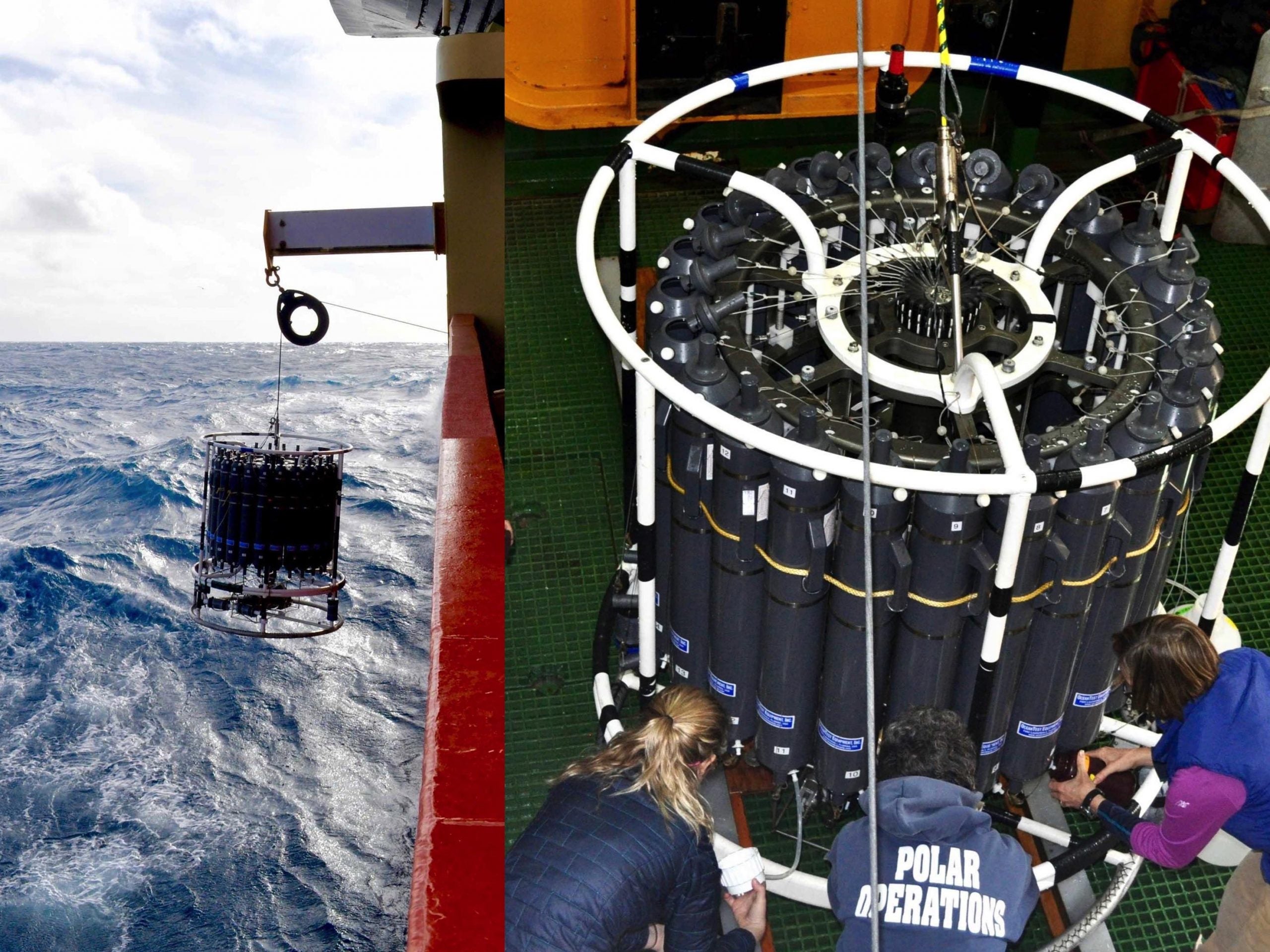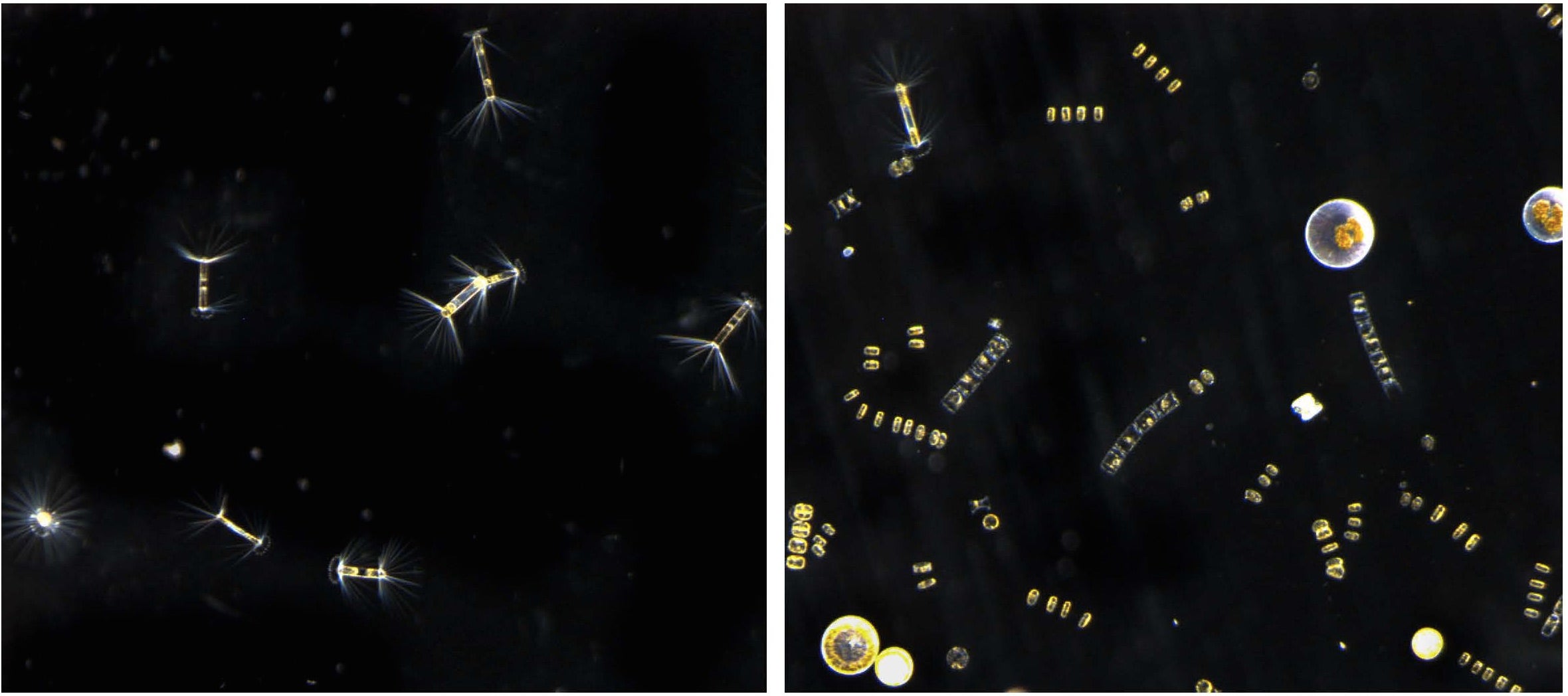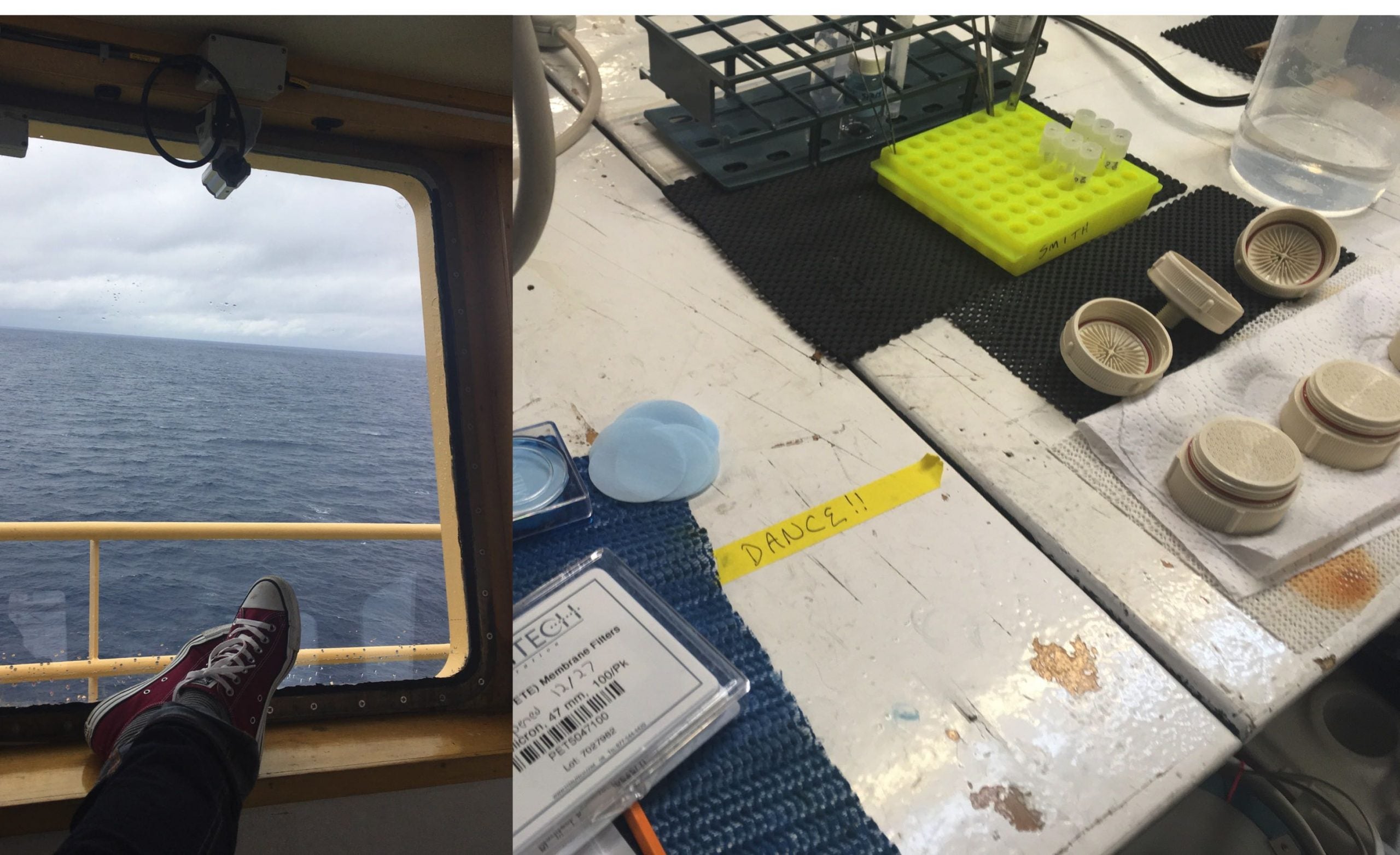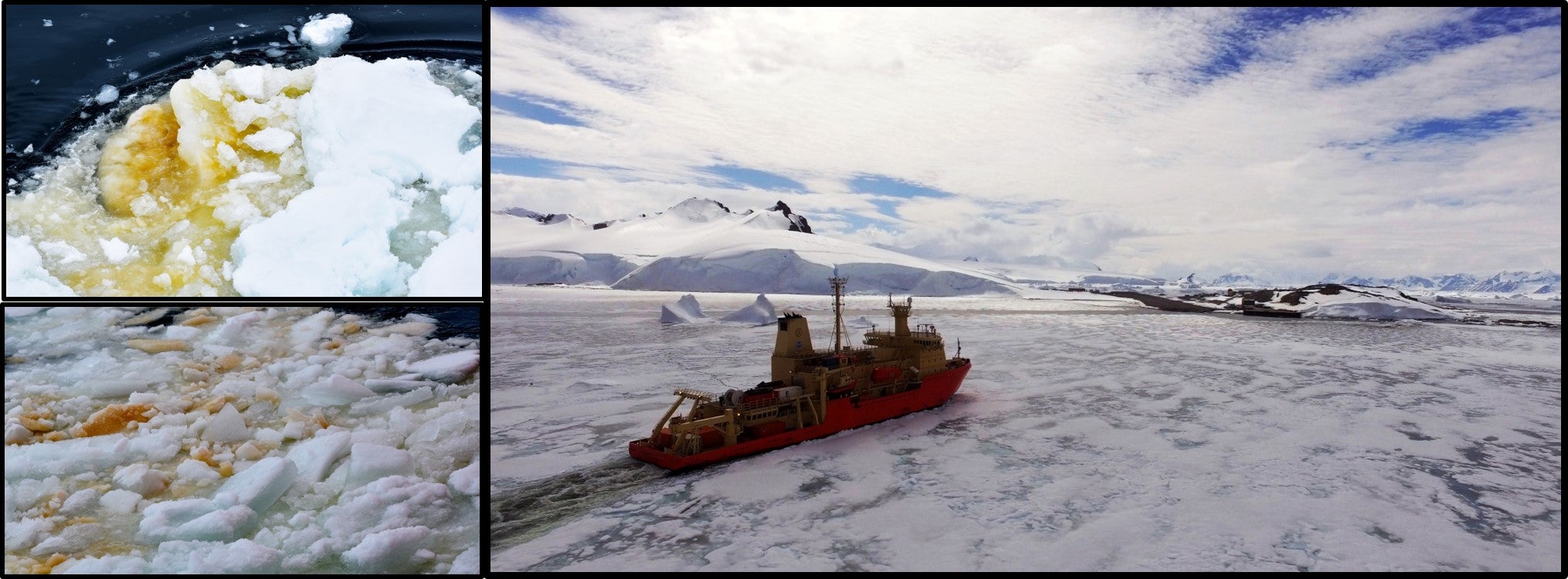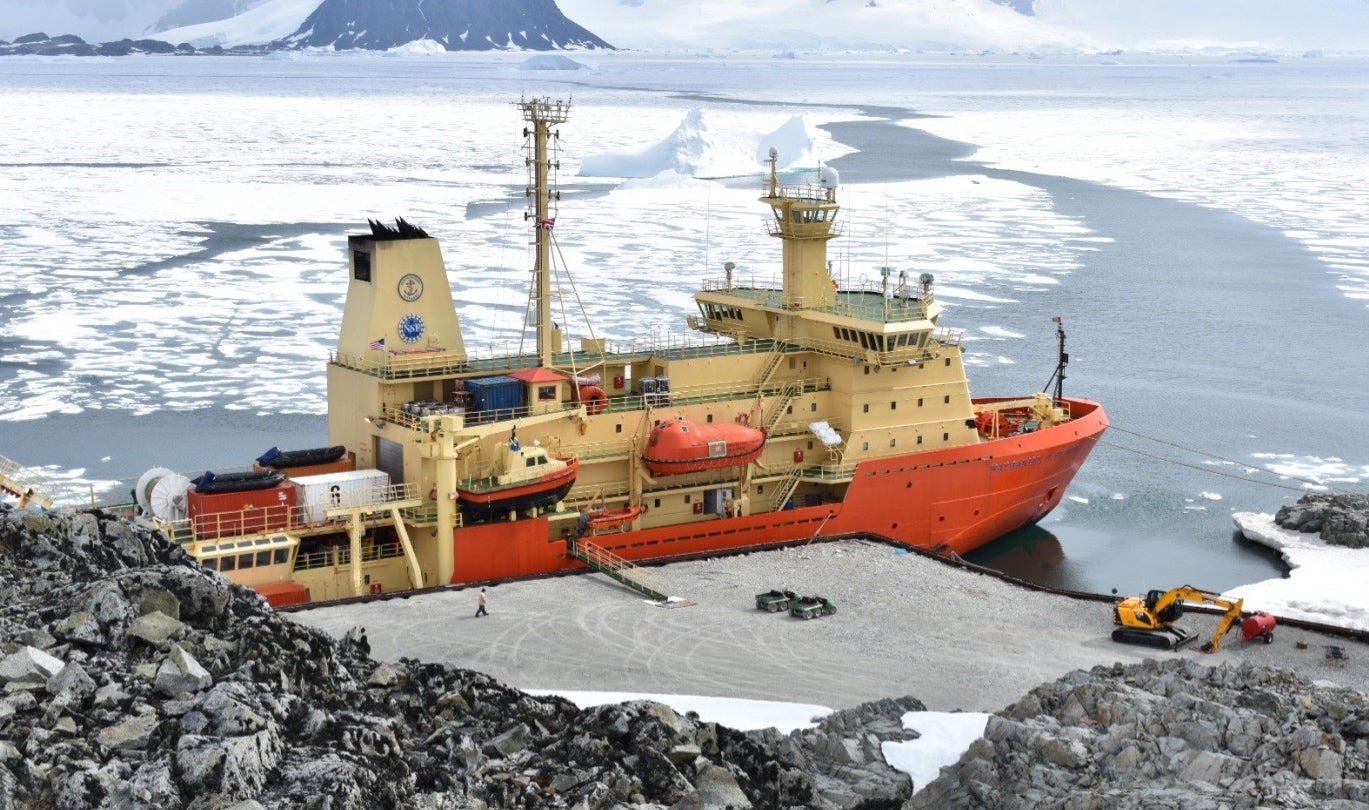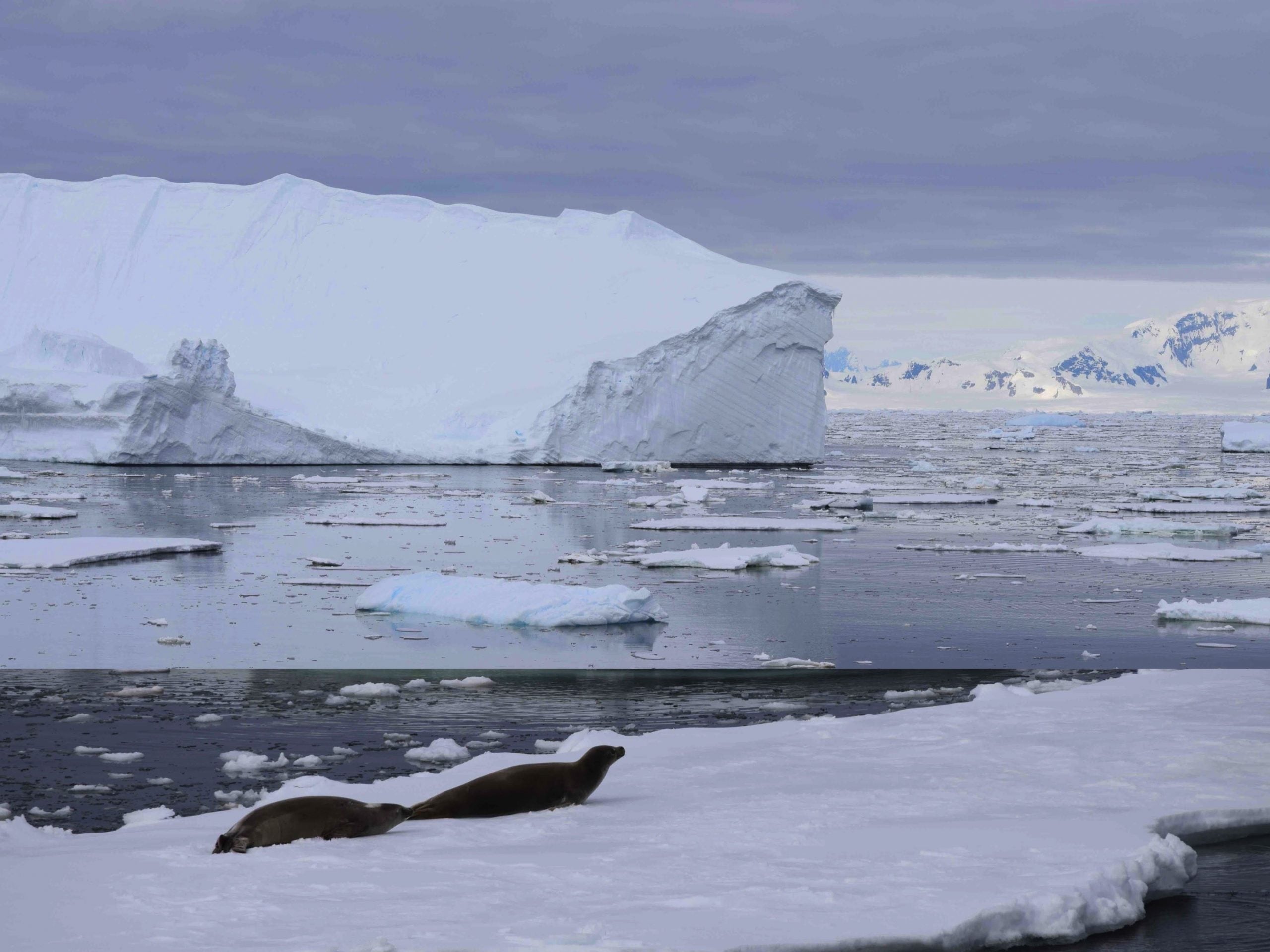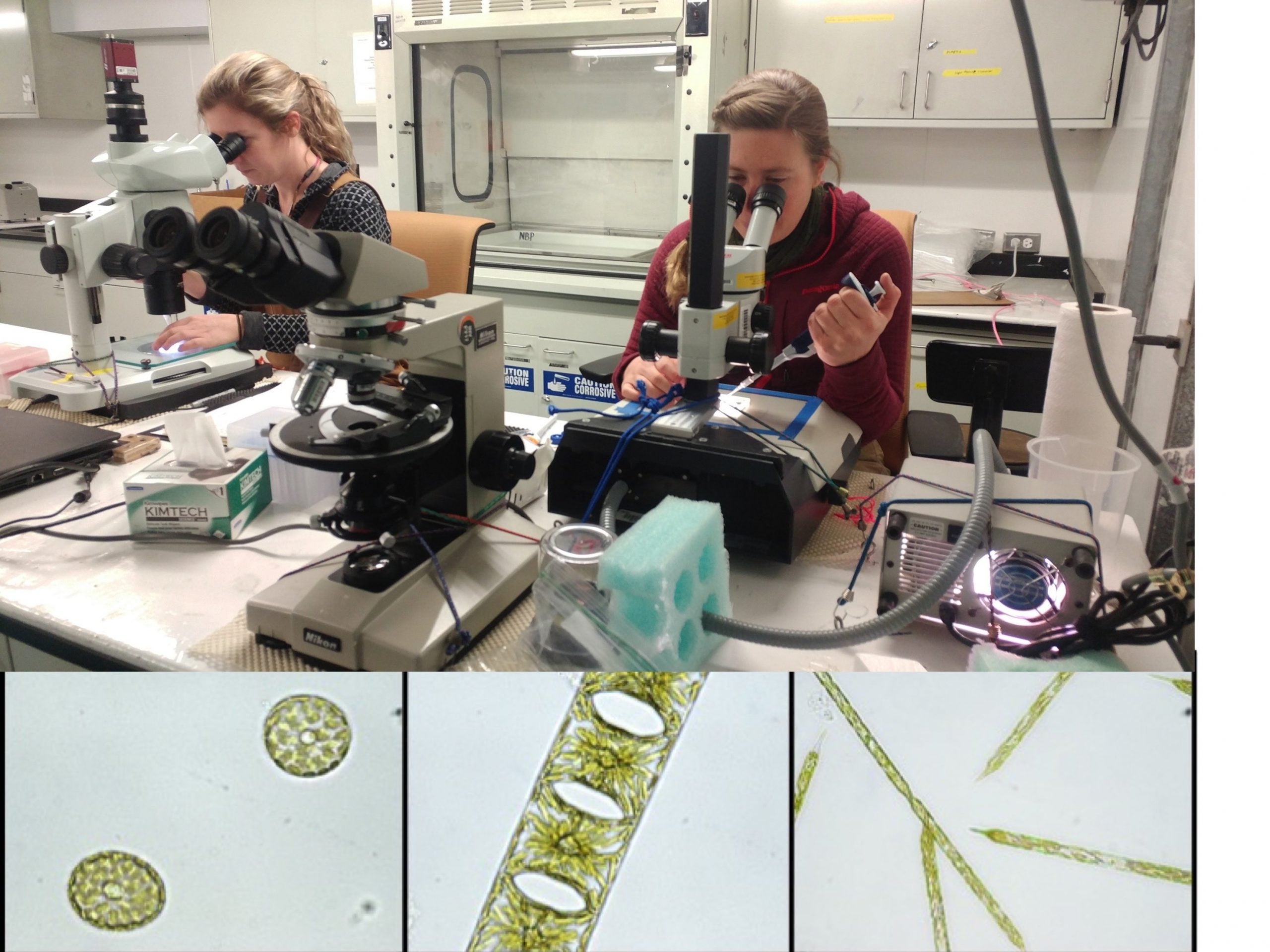Here in the Southern Ocean, we are surrounded by ice and abundant ‘charismatic megafauna’ including seals, whales, and penguins. We think phytoplankton are pretty darn charismatic too given their capacity to fuel this diverse and flourishing Antarctic marine ecosystem. Fortunately, we have an instrument on board that allows us to image the diverse and stunningly […]
Continue reading "Meet FlowCam: The N.B. Palmer Creature Feature"Category: Antarctic cruise
Science support on the Palmer
We couldn’t do all this sampling without the amazing support staff available on this ship. The ship’s crew get us to our sample locations, keep everything working and keep us fed and comfortable. The MTs (Marine Technicians) get our sampling equipment in and out of the water and keep it functioning. Meanwhile, the ETs (Electronics […]
Continue reading "Science support on the Palmer"Traversing the Southern Ocean
If you’ve been following our journey, you’ve probably noticed that our cruise track has taken us across several lines of longitude and many time zones. In total, we will be setting back our clocks eight times while we traverse the Southern Ocean! Why would we subject ourselves to such chaos? The answer lies in the […]
Continue reading "Traversing the Southern Ocean"Deep water on the high seas
When you are rocking and rolling on a ship with large swells and high winds, it can be difficult just to collect water from the surface, much less from the ocean’s depths. On this cruise, we are using a CTD rosette to sample water below the ocean’s surface. The rosette has two important components. The […]
Continue reading "Deep water on the high seas"The inshore and offshore lives of diatoms
We are now entering the open waters of the Amundsen Sea after a few days sampling in the beautiful fjords of the West Antarctic Peninsula. Above are two photographs of diatom communities from two of our sampling stations. The image on the left depicts diatoms we found in one of the open ocean sites while […]
Continue reading "The inshore and offshore lives of diatoms"A complex dance
The last two days of the year were our most intense sampling of the project so far, and I worked through both nights, mostly alone, in the wet lab, filtering and filtering and … filtering. I’ve now been doing this sort of thing (lab work, research, filtering) for about half my life, and it goes […]
Continue reading "A complex dance"Diatoms in ice – microbes that can engineer their environment.
Our excursion to the British Antarctic Station “Rothera” offered an opportunity for most of us to watch the R/V Nathaniel B Palmer’s incredible icebreaking capability as we navigated the ice-covered coastal waters on our approach to the base (Picture on the right). An interesting observation along this path was the presence of patches of brownish […]
Continue reading "Diatoms in ice – microbes that can engineer their environment."Antarctic New Year’s Eve
We are currently finishing up the last couple of stations for the LTER region. This stretch consisted of 7 stations that fit tightly into about a day and a half stretch. So, although things have been quite packed everything is going well and the team is operating efficiently. The views down here in the LTER […]
Continue reading "Antarctic New Year’s Eve"West Antarctic Peninsula
We’ve broken up into two shifts to cover the round the clock spacing of the Long Term Monitoring Stations described yesterday. The early shift (4a.m. to 4 p.m.) had 3 tightly spaced stations. At 4:30 a.m. we had our first view of the Antarctic Peninsula, through the porthole in the filtering lab. We’ve been getting […]
Continue reading "West Antarctic Peninsula"Approaching the West Antarctic Peninsula
We are almost across the Drake Passage! Later today, we will begin intensive sampling along the coast of the Antarctic Peninsula, our second of five regions we will target during our time at sea. Here on the Antarctic Peninsula, we will continue our work to carefully isolate single cells of diatoms from each station that […]
Continue reading "Approaching the West Antarctic Peninsula"



